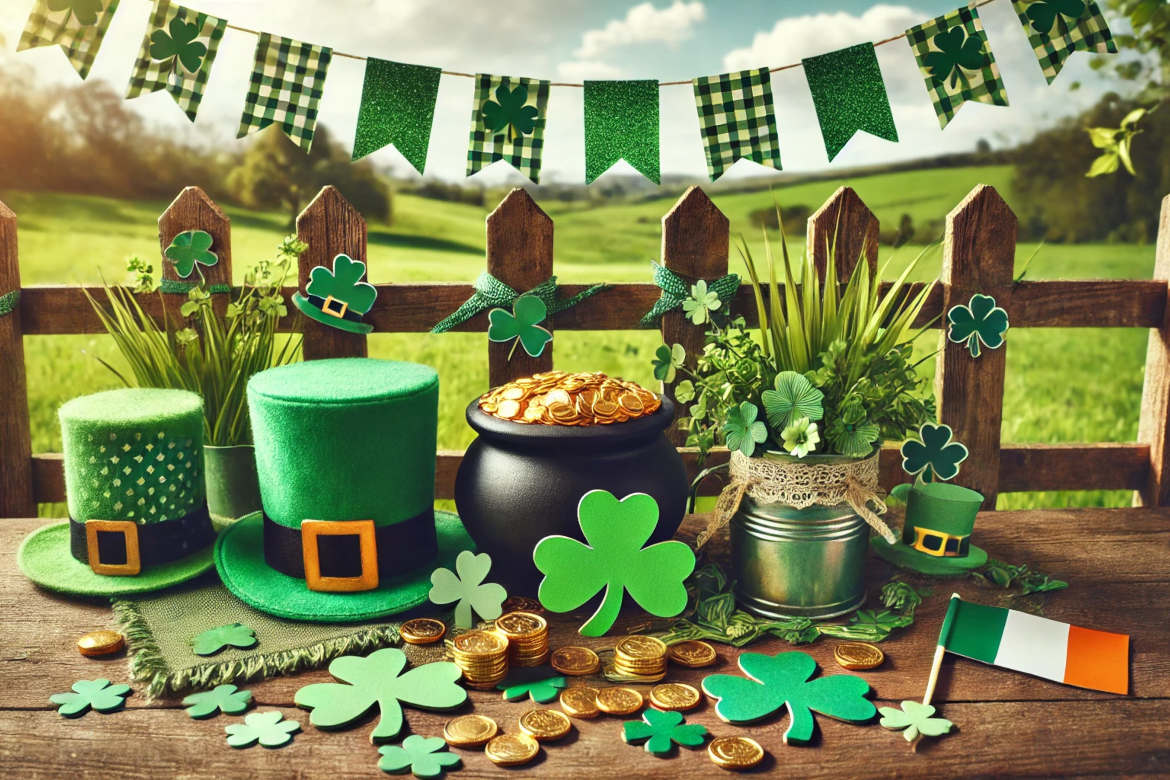Every year, on March 17, an emerald tide sweeps across Ireland and various other countries, draping cities in green and filling the streets with music, revelry, and a spirit of camaraderie.
St. Patrick’s Day, named for the patron saint of Ireland, has evolved into a global phenomenon, blending sacred tradition with cultural festivity. Yet, beneath the parades, pints of stout, and seas of shamrocks, the holiday’s origins are steeped in history, faith, and a remarkable tale of resilience.
Table of Contents
Who Was St. Patrick?
The story of St. Patrick begins not in Ireland but in Britain, where he was born in the late 4th or early 5th century to a Romanized family. His given name was likely Maewyn Succat, and his early life was far from saintly. As a teenager, he was kidnapped by Irish raiders and sold into slavery, spending six years tending sheep in the rugged, misty hills of Ireland.
During this time, Patrick turned to Christianity for solace and, according to legend, had a divine vision instructing him to escape. He managed to flee back to Britain, but his time in Ireland had left an indelible mark on him. After training as a missionary, he returned to the land of his captivity, determined to spread Christianity.
Over the next several decades, Patrick traveled across Ireland, converting the population, establishing churches, and, as folklore claims, using the three-leafed shamrock to explain the concept of the Holy Trinity. He is also credited, somewhat apocryphally, with banishing snakes from Ireland, though scientists suggest the island never had any serpentine inhabitants to begin with.
Patrick’s death on March 17, around the year 461, became a day of commemoration in Ireland. Over the centuries, this feast day transformed into a vibrant worldwide celebration, symbolizing unity and hope.
The Evolution of St. Patrick’s Day
For much of history, March 17 was observed as a solemn religious occasion in Ireland, marked by church services and quiet reflection rather than festivity. The Catholic Church declared it an official feast day in the early 17th century, allowing for a temporary reprieve from Lent, a season of fasting. This made it a rare day of indulgence during an otherwise austere period.
Ironically, it was the Irish diaspora, particularly in the United States, that transformed St. Patrick’s Day into the exuberant celebration recognized today. In the 18th and 19th centuries, waves of Irish immigrants, many fleeing famine and hardship, sought to maintain their cultural identity in unfamiliar lands. Parades, which had first appeared in Spanish Florida as early as 1601, gained prominence in American cities like Boston, New York, and Chicago, serving as both expressions of pride and political statements.
By the 20th century, St. Patrick’s Day had expanded beyond Irish communities, embracing anyone who wished to partake in the merriment. The tradition of dyeing the Chicago River green, first introduced in 1962, epitomizes the holiday’s theatrical transformation, while landmarks from the Sydney Opera House to the Pyramids of Giza have been illuminated in green as part of the global celebrations.
Symbols and Traditions
Many of the symbols associated with St. Patrick’s Day trace their roots to Irish folklore and Christian iconography. The shamrock, tied to Patrick’s teachings, became a national emblem. The leprechaun, originally a mischievous spirit in Celtic mythology, was popularized by American commercialism, evolving into a whimsical figure synonymous with the holiday.
In Ireland, traditional music plays an integral role in the celebrations. The lively strains of fiddles, tin whistles, and bodhráns (Irish drums) accompany folk dances and gatherings, a nod to the country’s ancient bardic traditions. Meanwhile, the custom of wearing green stems from an older belief that the color rendered one invisible to leprechauns, who were said to pinch anyone they could see.
A Reflection on Irish Heritage
Beyond the revelry, St. Patrick’s Day remains an important link to Irish heritage and history. In recent decades, Ireland has embraced the holiday’s commercial appeal while also reclaiming its cultural authenticity. Dublin’s multi-day St. Patrick’s Festival, established in the mid-1990s, blends traditional elements with contemporary art, storytelling, and performances that showcase Ireland’s dynamic identity.
Though acknowledged in some parts of the world, St. Patrick’s Day ultimately endures as a symbol of resilience and belonging. Whether through quiet reflection, joyous parades, or the raising of a glass in good cheer, it continues to unite people in honor of a shared history that transcends borders.
Saint Patrick’s Day: Frequently Asked Questions
Why do we celebrate St. Patrick’s Day?
St. Patrick’s Day honors St. Patrick, the patron saint of Ireland, who is credited with bringing Christianity to Ireland in the 5th century. Originally a religious feast day, it has evolved into a broader celebration of Irish culture and heritage worldwide.
What are 5 facts about St. Patrick’s Day?
- St. Patrick wasn’t Irish. He was born in Roman Britain around 385 AD.
- He used the shamrock to explain the Christian concept of the Holy Trinity.
- March 17th is the day of his death, not his birth.
- Green wasn’t always the color—originally, St. Patrick was associated with the color blue.
- The first St. Patrick’s Day parade was held in the U.S. (not Ireland), in New York City in 1762.
What is the true story of St. Patrick?
St. Patrick was born in Britain, kidnapped at age 16 by Irish raiders, and enslaved in Ireland. After six years, he escaped and returned home. He later became a Christian missionary and returned to Ireland to spread Christianity. His teachings blended Christian doctrine with local Irish traditions.

Why is St. Patrick’s Day considered a lucky day?
Over time, symbols like the shamrock (three-leaf clover) and the four-leaf clover became associated with luck. The day celebrates hope, renewal, and spiritual blessings, especially due to St. Patrick’s success in bringing Christianity to Ireland. Folklore and Irish tradition have also reinforced the idea of luck tied to the day.
St. Patrick’s Day spiritual meaning
Spiritually, the day marks the triumph of Christianity in Ireland. It symbolizes faith, transformation, and divine calling, commemorating how St. Patrick spread the Gospel, baptized thousands, and helped shape the religious foundation of the Irish people.
Why is St. Patrick’s Day celebrated on March 17th?
March 17th is believed to be the date of St. Patrick’s death in the year 461 AD. It became his feast day and was established by the Catholic Church to honor his life and work.
Saint Patrick’s Day traditional food
Traditional Irish foods enjoyed on St. Patrick’s Day include:
- Corned beef and cabbage (an Irish-American tradition)
- Irish soda bread
- Shepherd’s pie
- Boxty (Irish potato pancakes)
- Lamb stew or Irish stew
Why do we celebrate St. Patrick’s Day in the United States?
Irish immigrants brought the tradition with them, especially during the 19th century. The U.S. embraced the holiday as a celebration of Irish identity and pride. Over time, it became a cultural holiday that includes parades, festivals, and wearing green.

Why is St. Patrick’s Day so green?
Green is associated with:
- The Irish landscape, called the Emerald Isle
- The shamrock, used by St. Patrick
- Irish nationalism
- Green became popular in the 18th century during Irish rebellions, and it replaced the older association of blue.
What did St. Patrick teach us?
St. Patrick taught about:
- The Christian faith, especially the Trinity (Father, Son, Holy Spirit)
- Perseverance, by overcoming slavery and returning to the land of his captivity to serve
- Forgiveness, by ministering to the people who once enslaved him
- Missionary courage, by spreading faith in difficult circumstances
Where is St. Patrick buried?
St. Patrick is believed to be buried in Downpatrick, Northern Ireland, at Down Cathedral, alongside fellow saints St. Brigid and St. Columba.

